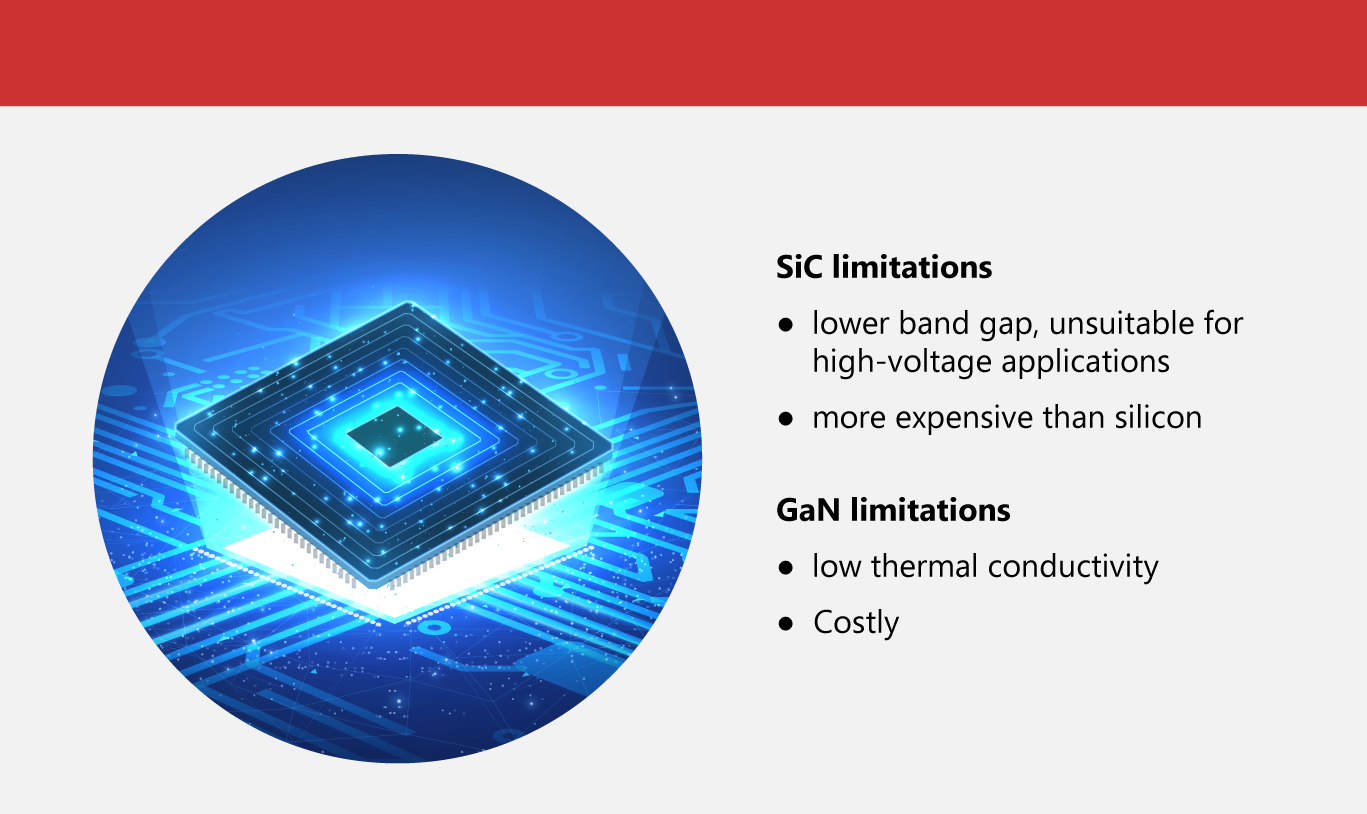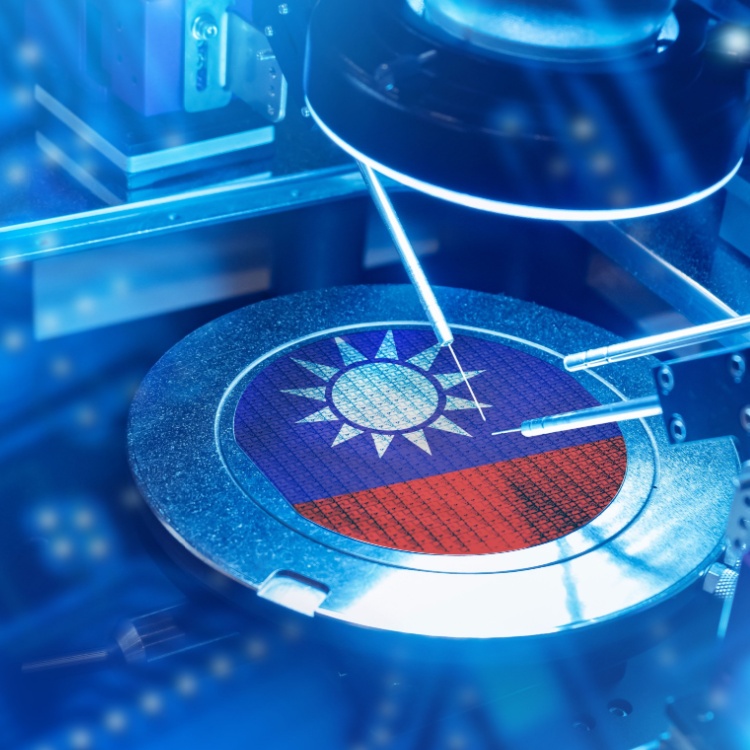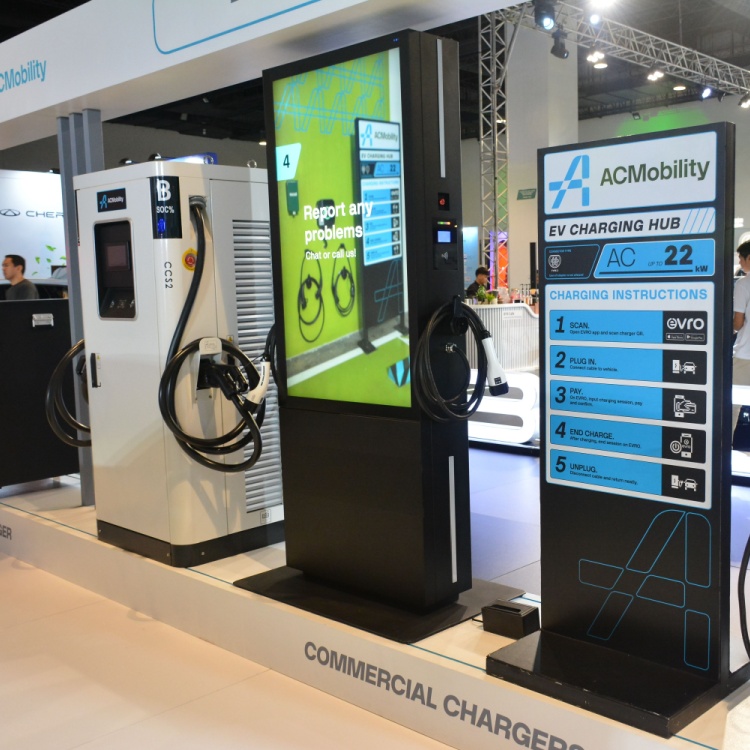Two New Semiconductors for 2024 and Beyond
Gallium Nitride (GaN) and Silicon Carbide (SiC) are power semiconductors shaping global industries. Proof of this is their growing market size, projected to reach US$1016.4 million by 2028 and US$2528.6 million by 2031.
In terms of power module assembly, wide bandgap (WBG) semiconductors are making waves, delivering high operating temperature, performance, and energy efficiency that are superior to those of silicon devices.
GaN and SiC are examples of WBG semiconductors becoming increasingly popular in many applications. Propelling its market growth are the boosted usage of electronic devices, the need for energy optimization—and evolving technology, allowing semiconductor wafers to have thinner layers, which improve performance while lowering cost.
Much of today’s tech advancements focus on being future-ready, with a strong emphasis on eco-friendliness. GaN and SiC promote sustainability by enhancing energy efficiency and reducing waste. They improve power conversion, generate less heat, and have longer lifespans, which minimizes the need for cooling and reduces electronic waste. Their efficiency also supports the effectiveness of renewable energy systems and electric vehicles, contributing to a cleaner, more sustainable future.
SiC vs. GaN
Both compounds offer several benefits, with more advancements continually being developed to maximize their capabilities. However, manufacturing industries are critically evaluating each compound’s pros and cons to determine which best suits their products. The decision will hinge on which material can best meet the evolving demands for efficiency, durability, and environmental impact in their specific applications.
Composed of silicon and carbon, SiC is known for its exceptional properties in high-performance applications due to its:
- High thermal conductivity, allowing it to operate efficiently at elevated temperatures and withstand harsh environments.
- High breakdown voltage and resistance to electrical stress, making it ideal for power electronics, such as inverters, power supplies, and electric vehicles.
- Durability, reducing the need for extensive cooling systems and enhancing the longevity and reliability of electronic devices.
GaN first made waves in 2001 when it revolutionized lighting technology, with LEDs now making up over 50% of the global market. Moreover, this shift has led to predictions that LED lighting will reduce electricity use for lighting by 30 to 40% in the next seven years.
Here are more of GaN’s advantages:
- Superior energy efficiency, reducing power losses in electronic systems.
- High-speed switching, enabling faster and more efficient operation in power electronics.
- Able to handle higher power levels in a smaller size, allowing for compact and lightweight designs.
- Operability at higher temperatures and ability to tolerate greater heat, reducing the need for extensive cooling.
- Better performance and reliability in high-frequency and high-voltage applications.
Applications of SiC and GaN
To sum it up, SiC excels in high-power and high-temperature applications, while GaN offers exceptional efficiency and performance in high-frequency and compact devices. These abilities make both materials crucial for modern power electronics and energy-efficient technologies.
-
Electric vehicles (EVs)
EVs are gaining traction in the automotive market, representing nearly 30% of globally sold passenger vehicles in 2023. This figure is likely to increase in the next few years, with EVs comprising half of passenger vehicles by 2028.
SiC and GaN transistors and electrodes are utilized in the production of electric vehicles. In 2017, Tesla used SiC for its EV traction inverters, which converted DC to AC for the motor and controlled its speed by adjusting the AC frequency. Today, Mercedes-Benz and Lucid Motors are incorporating SiC in their inverters, and other EV manufacturers are preparing to include SiC in future models.
Meanwhile, EV chargers require high power with constant efficiency and reliability. Vehicle-to-grid (V2G) technology, which allows cars to return power to the grid, also demands reliable, efficient solutions. SiC devices, like onsemi's EliteSiC Diodes, provide superior efficiency and performance, with options specifically designed for automotive and industrial use. Additionally, Gallium Nitride Field-Effect Transistors or GaN FETs are used in high-density applications like power supplies for servers, telecom, and industrial use, as well as electric vehicle chargers and converters.
-
Personal electronics
Since 2019, GaN-based chargers for phones, tablets, and laptops have been available from companies like GaN Systems and Navitas. GaN's properties, including lower costs and compact size, have made it popular for lower-power chargers of 25 to 500 watts. The material's lower production costs compared to traditional silicon, combined with its ability to produce smaller, lighter chargers, has significantly advanced the market for consumer electronics.
-
Power grids
SiC will dominate high-voltage power conversion for devices rated at 3 kilovolts and above for at least the next decade. These applications include stabilizing the power grid, converting AC to DC and back at transmission-level voltages, and more. Also, SiC devices, with voltage levels up to 1,200 volts and high current-carrying capacity, are well-suited for automotive and locomotive traction inverters, large solar farms, and high-power three-phase grid converters.
Solar power generation has rapidly expanded in recent years, both at the grid scale and in household applications. Each installation requires an inverter to convert the DC produced by solar panels into AC, which powers homes or feeds electricity back into the grid.
Traditionally, large-scale solar inverters have used silicon Insulated Gate Bipolar Transistors (IGBTs_ and SiC MOSFETs. But now, GaN is starting to gain popularity in smaller solar systems, particularly for home use.
SiC is also helping maximize electricity output from solar cells. SiC-based boost and inverter power integrated modules enhance the efficiency of critical stages, including single-phase and three-phase inverters that handle both DC/DC and DC/AC conversion. GaN devices are also becoming increasingly popular in compact solar inverters.
- 5G and 6G communication towers
GaN's faster speed and higher power density make it well-suited to dominate microwave applications, especially in 5G and 6G wireless networks, as well as in commercial and military radar. The main alternative, silicon LDMOS (Laterally Diffused Metal-Oxide Semiconductor) devices, are cheaper but offer decreased performance. At frequencies of 4 GHz and above, GaN faces little competition. For 5G and 6G wireless, bandwidth is crucial because it determines how efficiently data can be transmitted. Next-generation 5G systems will have almost 1 GHz of bandwidth, allowing extremely fast video and other use cases. Regardless of whether SiC or GaN emerges as the preferred choice among manufacturers, both materials play a significant role in promoting sustainability. SiC and GaN are key to advancing energy efficiency in power electronics, contributing to reduced energy consumption and lower carbon emissions.
Regardless of whether SiC or GaN emerges as the preferred choice among manufacturers, both materials play a significant role in promoting sustainability. SiC and GaN are key to advancing energy efficiency in power electronics, contributing to reduced energy consumption and lower carbon emissions. As one of the Top 20 EMS companies in the world, IMI has over 40 years of experience in providing electronics manufacturing and technology solutions.
As one of the Top 20 EMS companies in the world, IMI has over 40 years of experience in providing electronics manufacturing and technology solutions.
We are ready to support your business on a global scale.
Our proven technical expertise, worldwide reach, and vast experience in high-growth and emerging markets make us the ideal global manufacturing solutions partner.
Let's work together to build our future today.
Other Blog



